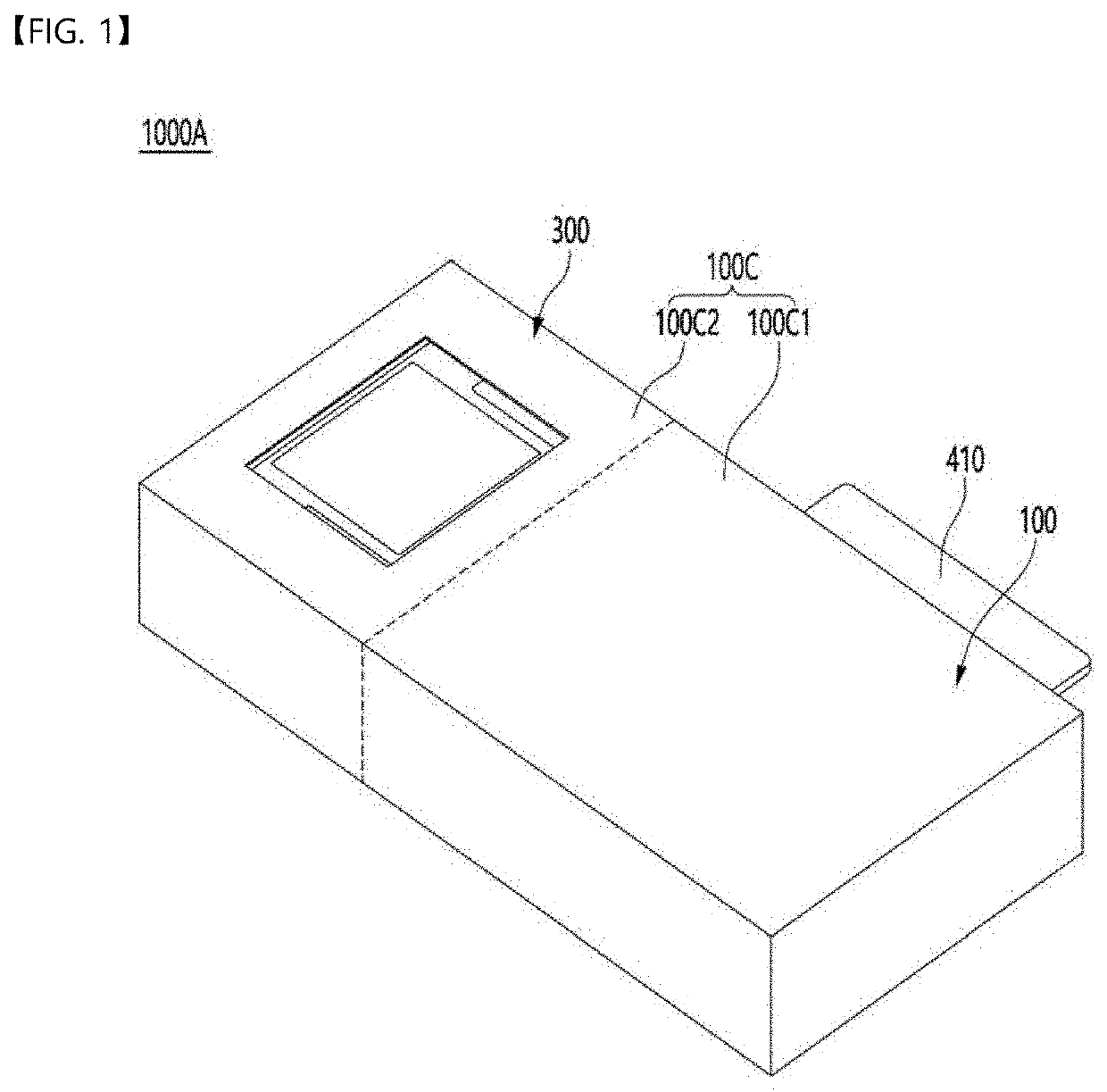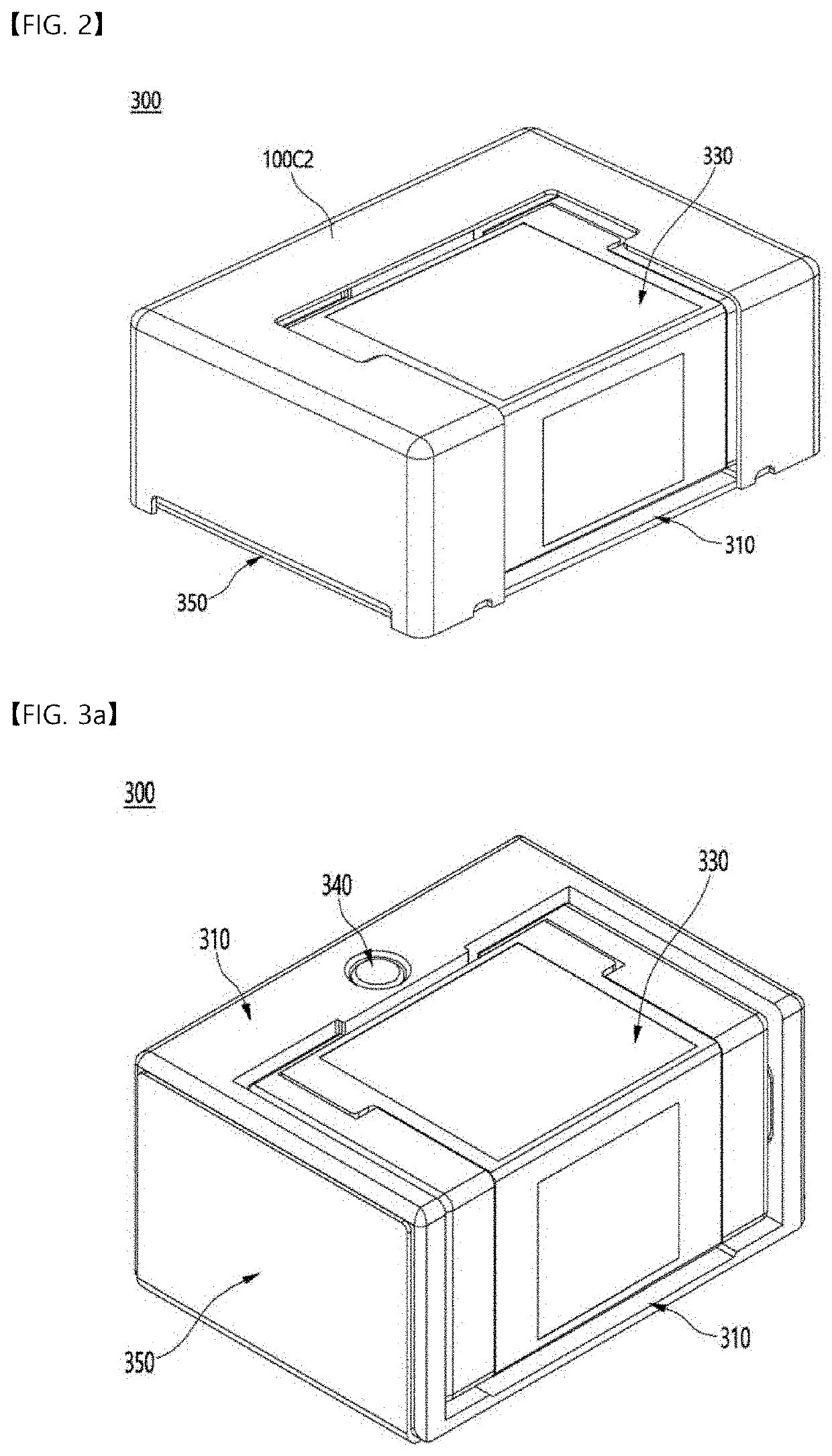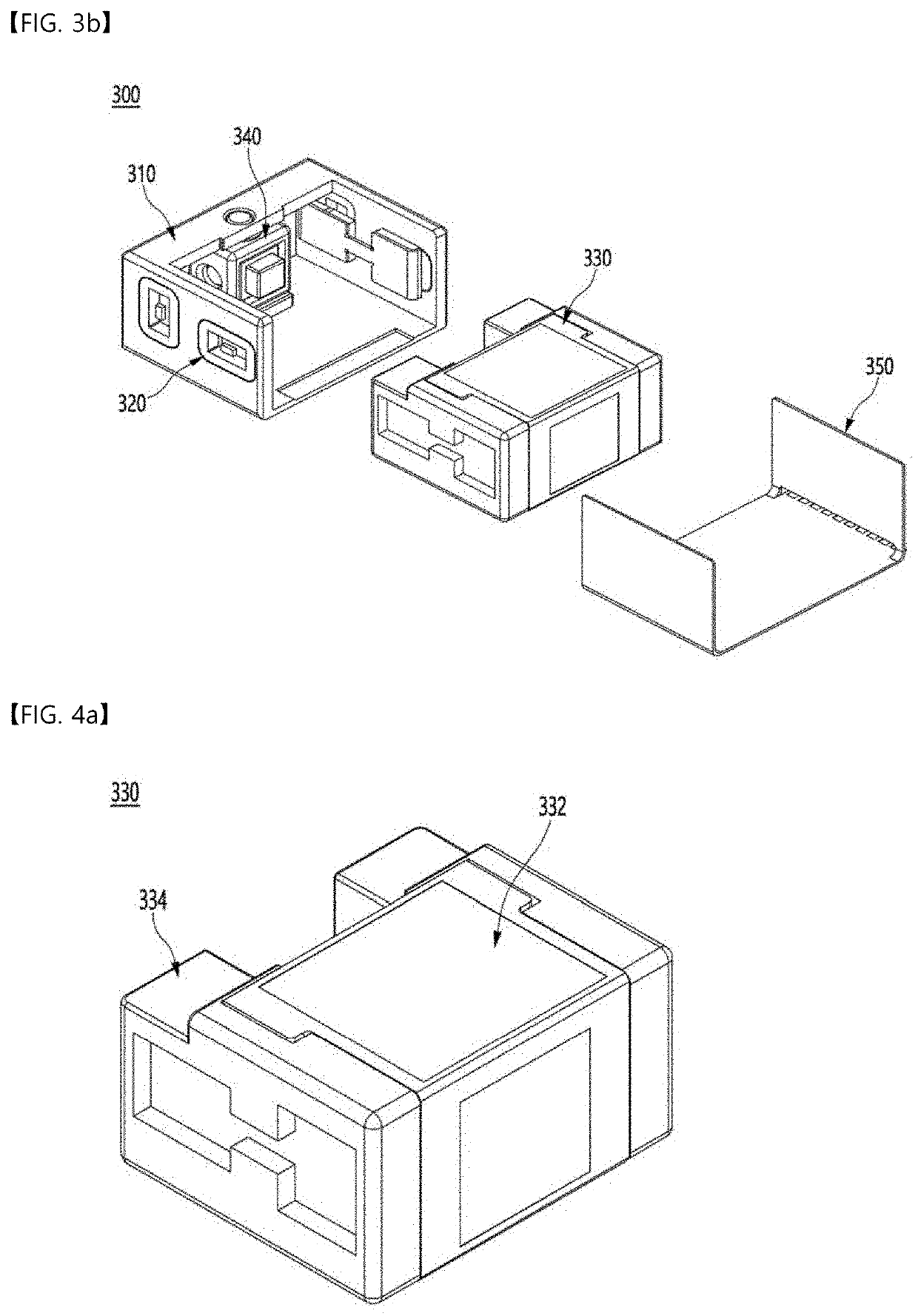Meanwhile, in the camera module, a
zoom actuator is used for a zooming function,
friction torque is generated when a lens is moved by the mechanical movement of the actuator, and such
friction torque causes technical problems such as a decrease in driving force, an increase in
power consumption, or a decrease in control characteristics.
In particular, in order to achieve the best optical characteristics by using a plurality of
zoom lens groups in a camera module, an alignment between a plurality of lens groups and alignment between the plurality of lens groups and an
image sensor should be well matched, but when decenter in which a spherical center between the lens groups deviates from an
optical axis, tilt that is a lens tilt phenomenon, and a phenomenon that a central axis of the lens group and the
image sensor is not aligned occur, a change in an
angle of view or occurrence of defocusing occurs, which adversely affects
image quality and resolution.
Meanwhile, when increasing a separation distance in a region where friction occurs in order to reduce frictional torque resistance when the lens is moved for the zooming function in the camera module, there is a technical contradiction in which lens decenter or lens tilt is intensified when a zoom is moved or a zoom movement is reversed.
Therefore, in a darker environment, in a high-pixel camera, image shake due to camera shake that occurs while a
shutter speed is slower occurs more seriously.
Recently, an ultra-slim and ultra-small camera module is required in accordance with technological trends, but since the ultra-small camera module has a space limitation for OIS drive, there is a problem that it is difficult to implement the OIS function applied to a general large camera, and there is a problem that the ultra-slim and ultra-small camera module cannot be implemented when the OIS drive is applied.
However, in recent years, in the high-pixel camera in the camera module, a size of a variable lens for OIS drive should be large in order to increase an amount of light received for clear
image quality, but when the size of the variable lens becomes large, there is a technical contradiction that encounters limitation of a thickness of a camera module and may not increase the size of the variable lens to a required level.
However, in order to implement such a double prism OIS, two independent actuators should be applied, and thus there is a problem that a size of the OIS actuator increases, and as the camera module
assembly process becomes complicated, issues of accuracy and reliability have arisen.
In addition, in the conventional OIS technology, an OIS driver is disposed at a side surface of a
solid-state lens
assembly within a limited camera module size, and thus there is a problem that it is difficult to secure a sufficient amount of light because a size of a lens to be subjected to OIS is limited.
Specifically, in order to achieve the best optical characteristics in a camera module, an alignment between the lens groups at the time of OIS implementation should be well matched through movement of a lens or tilting of a module, but in the conventional OIS technology, when a decenter in which a spherical center between the lens groups deviates from an
optical axis or a tilt which is a phenomenon of lens tilt occurs, there is a problem that adversely affects
image quality or resolution.
In addition, the conventional OIS technology may implement AF or
Zoom at the same time as OIS driving, but a
magnet for OIS and a
magnet for AF or
Zoom are disposed close to each other due to space limitation of a camera module and a position of a driving part of the conventional OIS technology, and cause a
magnetic field interference, and thus there is a problem that the OIS driving is not performed normally and a decent or a tilt phenomenon is induced.
Further, since the conventional OIS technology requires a mechanical driving device for lens movement or tilting of a module, there is a problem that a structure is complex and
power consumption is increased.
In addition, when implementing AF or
Zoom, a plurality of lens assemblies are driven by an electromagnetic force between a
magnet and a coil, and there is a problem that a
magnetic field interference occurs between magnets mounted in each lens
assembly.
There is a problem that AF or Zoom driving is not performed normally, and thrust is deteriorated due to such a
magnetic field interference between magnets.
In addition, there is a problem that a decent or tilt phenomenon due to a magnetic field interference between magnets is induced.
In addition, when each configuration of the camera module, for example, the magnet, etc. is detached in an environment with severe vibration such as a vehicle, it may cause major problems such as thrust, precision, and control as well as
mechanical reliability.
However, when the height of the coil is increased as described above, the
magnetic flux of the magnet is blocked by the coil, and thus there is a technical contradiction that the sensitivity of the hall sensor disposed inside the coil is weakened.
 Login to View More
Login to View More  Login to View More
Login to View More 


